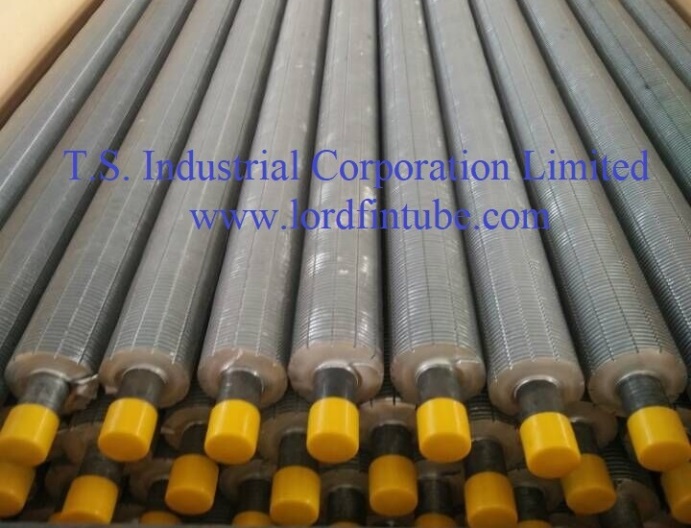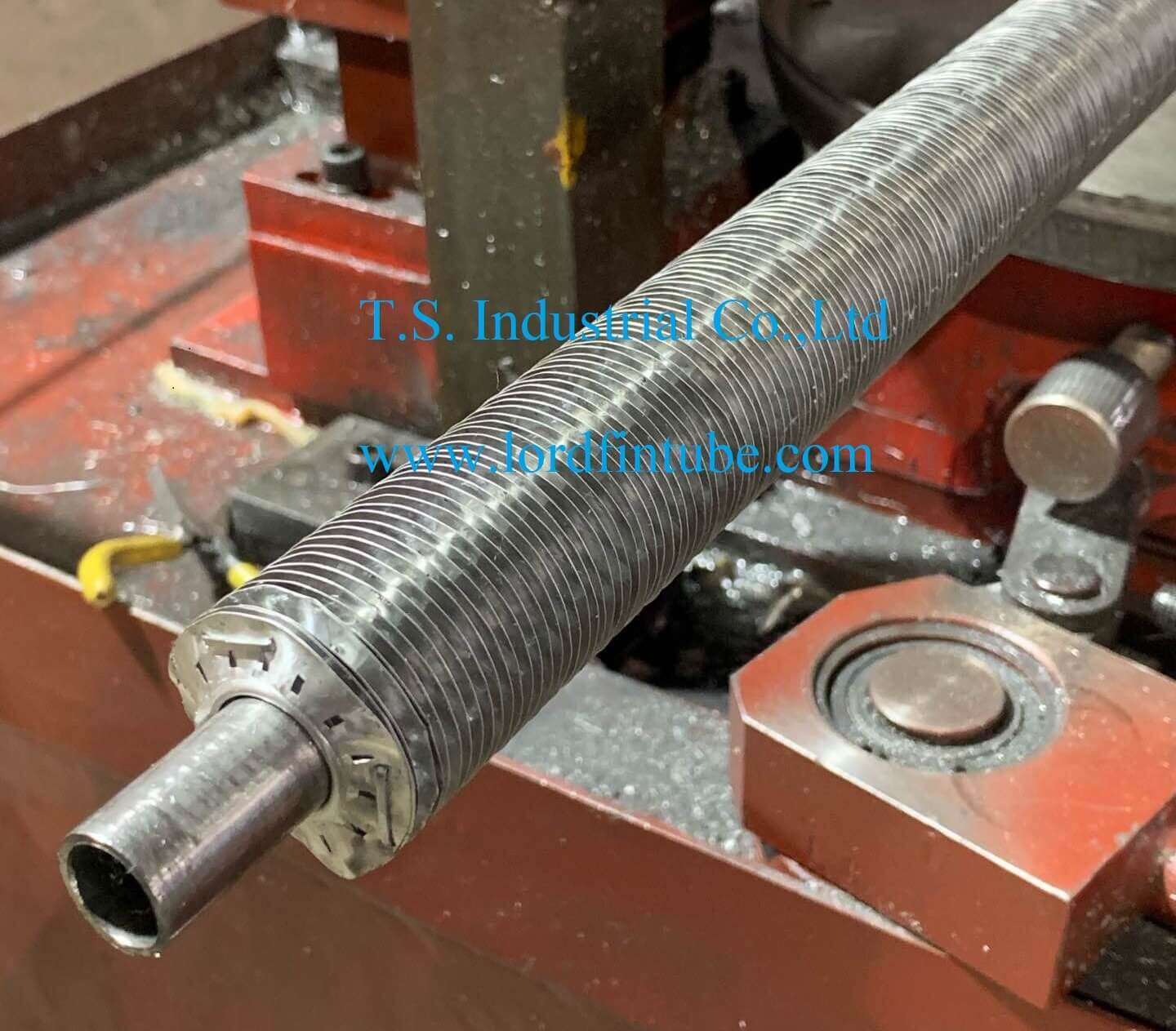Lord Fin Tube-Fabricante de tubo con aletas en China
El tubo con aletas es un elemento de intercambio de calor. Los tubos con aletas casi siempre se utilizan en intercambiadores enfriados por aire para compensar el bajo coeficiente de transferencia de calor del lado del aire. Fabricante de tubos con aletas en China. Para mejorar la eficiencia del intercambio de calor, el área de la superficie exterior (o área de la superficie interior) del tubo de intercambio de calor generalmente se aumenta agregando aletas en la superficie del tubo de intercambio de calor, logrando así el propósito de mejorando la eficiencia del intercambio de calor. El tubo con aletas es una especie de tubo de intercambio de calor.
Catálogo principal de tubos con aletas
1. Principales requisitos de rendimiento de los tubos con aletas.
2. Estado de la tecnología de producción de tubos de aletas
3. Clasificación de tubos con aletas.
Principales requisitos de rendimiento de los tubos con aletas.
Como componente de intercambio de calor, el tubo con aletas funciona durante mucho tiempo en condiciones de gases de combustión a alta temperatura. Por ejemplo, el tubo de aletas del intercambiador de calor de la caldera tiene un ambiente hostil, alta temperatura y alta presión y se encuentra en una atmósfera corrosiva, lo que requiere un alto rendimiento del tubo de aletas. índice.
1), rendimiento anticorrosión
2), resistencia al desgaste (antidesgaste)
3), baja resistencia al contacto con el calor
4), capacidad de transferencia de calor de alta estabilidad
5), capacidad anti-incendios
Estado actual de la tecnología de producción de tubos de aletas.
1), tubo de aleta de placa
Las aletas estampadas se pueden fabricar en casi cualquier forma o tamaño. Este estilo de aleta se conoce comúnmente como "aleta cuadrada" o "aleta de placa". Aunque cualquier forma es posible, la cuadrada y la redonda son la norma.
El proceso del tubo con aletas consiste en preprocesar un lote de aletas individuales mediante punzonado y luego, manual o mecánicamente, de acuerdo con una cierta altura (distancia del ala), las aletas se colocan en la superficie exterior del tubo por interferencia. Es el método más antiguo para procesar tubos con aletas. Debido al proceso simple y los bajos requisitos técnicos, el equipo utilizado es económico y fácil de mantener, por lo que muchas fábricas todavía están en uso. Este proceso es una solución de proceso que requiere mucha mano de obra y es adecuada para las condiciones técnicas y de capital de las pequeñas o medianas empresas.
El método manual se llama traje manual. Utiliza herramientas para confiar en la fuerza humana para empujar las aletas una por una. En este método, dado que la fuerza de presión de la aleta es limitada, la interferencia del conjunto es pequeña y la aleta es propensa a aflojarse.
The mechanical set fins are made on a fin set machine. Since the fin press-in is caused by mechanical impact or liquid pressure, the press-in force is large, so that a large interference can be used. The joint strength between the fin and the tube is high and it is not easy to loosen. The mechanical transmission set machine has high productivity, but the noise is high, the safety is poor, and the labor conditions of the workers are not good. Although the above problems are not present in the hydraulic transmission, the equipment is more expensive, the technical requirements for the maintenance personnel are higher, and the productivity is lower.
2),Embedded spiral fin tube
The embedded spiral finned tube is a spiral groove of a certain width and depth pre-machined on the steel pipe, and then the steel strip is embedded on the steel pipe on the lathe. During the winding process, due to a certain pre-tightening force, the steel strip will be tightly placed in the spiral groove, thereby ensuring a certain contact area between the steel strip and the steel tube. In order to prevent the steel strip from rebounding, both ends of the steel strip are welded to the steel pipe. In order to facilitate the setting, there should be a certain backlash between the steel strip and the spiral groove. If the backlash is too small and an interference is formed, the inlaying process is difficult to proceed smoothly. In addition, the entangled steel strip always has a certain rebound, which results in a poor joint between the steel strip and the spiral groove bottom surface. Inlaid fins can be carried out on general-purpose equipment at a low cost, but the process is complicated and the production efficiency is low.
Brazed Finned Tubes are commonly used in applications with metal temperatures up to 380° C, and with special coating, 800° C.
The processing of the brazed spiral finned tube is carried out in two steps. Firstly, the steel strip plane is wound on the outer surface of the pipe in a spiral manner perpendicular to the axis of the pipe, and the two ends of the steel strip are welded to the steel pipe for fixing, and then the gap between the steel strip and the steel pipe is eliminated, and the brazing method is used. The steel strip and the steel tube are welded together.
Because of its high cost, this method is often used in another way, in which the tube wrapped with steel strip is placed in a zinc bath for integral hot-dip galvanizing instead. The use of integral hot-dip galvanizing, although the plating solution does not see a good gap between the fin and the steel pipe, but a complete galvanized layer is formed on the outer surface of the fin and the outer surface of the steel pipe. The spiral finned tube with integral hot-dip galvanizing is limited by the thickness of the galvanized layer (when the galvanized layer is thick, the zinc layer is weak and easy to fall off), and the zinc liquid cannot penetrate into the gap completely, so the fins and The joint rate of steel pipes is still not high. In addition, the heat transfer coefficient of zinc is smaller than that of steel (about 78% of steel), so the heat transfer capacity is low. Zinc is highly susceptible to corrosion in acids, alkalis and sulfides. Therefore, galvanized spiral finned tubes are not suitable for the production of air preheaters (recovery of boiler flue gas waste heat).
4),High frequency welding spiral fin tube
High-frequency high-frequency welding spiral finned tube is one of the most widely used spiral finned tubes. It is widely used in waste heat recovery in electric power, metallurgy, cement industry and petrochemical industry. High-frequency welding spiral finned tube is a steel strip wound steel pipe
The skin effect and the proximity effect of the high-frequency current are used to heat the outer surface of the steel strip and the steel pipe until plastic state or melting, and the welding is completed under a certain pressure of winding the steel strip. This high frequency welding is a solid phase welding. Compared with inlaying, brazing (or integral hot-dip galvanizing), it is more advanced in terms of product quality (high fin weldability, up to 95%), productivity and automation. .
5),Three-roller cross-rolling integral spiral finned tube
The production principle of the three-roller-rolled monolithic spiral finned tube is as follows: a mandrel is lined in the light pipe, and the seamless steel pipe is processed on the outer surface of the cavity formed by the groove and the core through the rotation of the roll blade. Finned. The finned tube produced by this method has an organic whole due to the base tube and the outer fin, so there is no problem of contact thermal resistance loss, and the heat transfer efficiency is high. Compared with the welding method, the three-roll cross-rolling method has the advantages of high production efficiency, low consumption of raw materials, and high heat exchange rate of the produced finned tubes.
At present, the three-roller-rolled monolithic spiral finned tube technology has been successfully applied to single-fin tube or composite finned tube with copper or aluminum fins, or steel low-fin tube; steel integral finned tube is currently The market is often seen as a low-fin tube, and the overall high-fin tube is made of aluminum or copper, which is usually cold-rolled.
Laser welded finned tubes are used in civil fireplaces, industrial boilers, etc., using German technology, domestically emerging, but in Europe for more than a decade, the advantage is that the contact thermal resistance is zero, compared with high-frequency welding winged Larger, lighter weight, assembled heat exchangers are compact, more energy efficient and environmentally friendly, meeting national emission requirements.
Classification of finned tubes
There are many types of finned tubes, and new varieties are constantly emerging. In general, it can be classified according to the following aspects:
1, According to processing technology classification
1), Extruded fin tube;
2), Welded molded finned tube (high frequency welded finned tube, submerged arc welded finned tube);
3), Roll formed finned tube;
4), Plate finned tubes;
5), Cast Iron finned tubes;
6), Tension wrapped finned tube;
7), Embedded finned tube.
2, Classified by fin shape
1), Square finned tube;
2), Round finned tube;
3), Spiral finned tube;
5), Corrugated finned tube;
6), Helical Serrated Finned Tubes;
7), Nail finned tube, studded pipe or Pin tube, needle finned tube;
8), Integral plate finned tube (plate fin);
9), Inner finned tube.
3. According to whether the fin material of the finned tube is the same as the material of the base tube, it can be divided into:
2), Bimetallic finned tube
Single metal finned tube classified by material
1), Copper finned tube;
2), Aluminum finned tube;
3), Carbon steel finned tube;
4), Stainless steel finned tube;
5), Cast iron (cast steel) finned tube; and so on.
Bimetallic finned tube classified by material
1), Carbon steel finned tube with aluminum fin, copper fin;
2), Stainless steel finned tube with aluminum fin, copper fin;
3), Carbon steel finned tube with carbon steel fin;
4), Stainless steel finned tube with carbon steel fin;
5), Stainless steel finned tube with Stainless steel fin;
6), Cast iron (cast steel) finned tube;
7), Copper finned tube with copper fin;and so on.
4. Classified by fin tube usage
1), Finned tubes for air conditioning;
2), Air-cooled finned tube;
3), Boiler: finned tube used for water wall, economizer and air preheater respectively;
4), Finned tube for industrial waste heat recovery;
5), Otros tubos con aletas para fines especiales; etcétera.

Fabricante de tubos con aletas en China
请输入搜索关键字
确定






